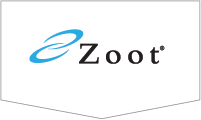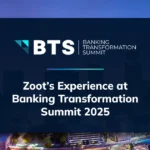Modernization in financial services is no longer optional, but that doesn’t mean it has to be disruptive. In a landscape often defined by rapid change, evolving expectations, and regulatory complexity, the smartest path forward isn’t always a full-stack rebuild. It’s unlocking more value from what you already have.

Misconceptions about Modernization in Banking
Modernization isn’t about reaching a “perfect” state, but about creating the flexibility to adapt, scale, and deliver better outcomes, now and in the future. That means equipping your teams with the right tools, integrating data and logic across systems, and making every decision point smarter and faster.
Many institutions still equate modernization with a massive technology overhaul. But these sweeping, monolithic initiatives come with big risks – cost overruns, multi-year implementation timelines, increased disruption, and uncertain returns. Even worse, they often delay the innovation needed to stay ahead by forcing teams to wait for the new system to be fully finished before making meaningful changes.
In reality, the most impactful transformations happen incrementally, in a phased approach. With the right architecture, you can complete targeted modernization efforts without interrupting business operations or discarding the systems that are working well for you.
The Modernization Mandate & Why It Matters
The financial services industry has made major investments in AI, cloud, data platforms, and other tech upgrades over the years. However, those investments only deliver value when they are connected to real business outcomes, which means doing more than simply storing data or running models. It means operationalizing those insights, embedding them directly into customer interactions, risk strategies, and onboarding flows.
Customers expect fast, intuitive, and personalized experiences, whether they’re applying for a credit card, opening a deposit account, taking out a personal loan, or looking to finance a large purchase with an installment plan. Competitors are moving quickly to meet and exceed those expectations. If your institution is still waiting for the “right time” for an overhaul to get started, you may already be falling behind.
Whether you’re adjusting credit policy, testing new logic, or fine-tuning your data provider calls for reduced costs, strategic modernization enables faster iteration, stronger growth, and more personalized experiences for your customers.
A Framework for Successful Modernization
At Zoot, we believe modernization should be modular, orchestrated, and high-impact. Here’s how we help our clients move forward, confidently and at their own pace, to create lasting growth.
Adjusting Policy Quickly in a Low Code Environment
Zoot gives business and risk teams the power to launch or refine decision strategies in real time, using a low-code interface that minimizes IT dependency. This flexibility allows institutions to react quickly to market shifts, regulatory changes, or emerging fraud threats without waiting weeks or months to implement those changes.
Modular Architecture That Works With (Not Against) Your Existing Systems
Zoot’s solutions are built for seamless integration. With modular architecture, financial institutions are able to layer new capabilities on top of their existing infrastructure to enhance performance. That means you can begin to modernize specific functions like onboarding, fraud prevention, or cross-sell, without a costly, high-risk overhaul of your core system.
Over time, this approach supports incremental transformation across business units and product lines, allowing upgrades to happen in the areas that will bring the highest return and setting the stage for future initiatives.
Data & Policy Orchestration Across Systems and Sources
Advanced decisioning depends on orchestrating dozens – or even hundreds – of inputs across identity verification, credit risk, behavioral analytics, and more. The right solution makes this orchestration seamless, integrating data and logic from your existing internal data sources, external providers, and more into one cohesive flow. The result? Financial institutions are enabled to make fast, context-aware decisions with confidence for more accurate outcomes and a smoother customer journey.
When data and policy are successfully orchestrated across systems and providers, financial institutions gain a clearer, more complete picture of each applicant or customer. By eliminating the silos that slow teams down, piecing together data manually, or toggling between systems, business users can work from a single decision flow that automatically pulls and applies the right data at the right time, accelerating high-quality decisions and improving both efficiency as well as the customer experience.
Enterprise-Grade Scalability
Financial services is one of the most demanding, highly-regulated environments to operate in. Zoot has a proven track record of supporting our clients’ real-time decisioning at scale, with the performance, uptime, and controls today’s institutions require.
However, true enterprise scalability means more than simply handling high volumes – it means enabling coordinated, personalized engagement across the entire customer lifecycle. By unifying fragmented data, financial institutions can bring together data and decisioning across lines of business, making it possible to recognize and act on opportunities in real time.
For example, a customer who’s just been approved for a credit card may also be an ideal candidate for a personal loan or small business account. Connected data enables timely, relevant cross-sell offers that are aligned with the customer’s need, driving deeper relationships and sustained growth.
Getting Started on Modernization, Without Starting Over
Modernization isn’t just about having the newest tools. It’s about orchestrating the right ones to unlock lasting results, improve experiences, and drive better decisions across your entire organization.
With Zoot, you can modernize incrementally and strategically, on your terms – creating meaningful experiences for customers in the present while building toward the future.
One of Zoot’s greatest strengths is our ability to connect what others can’t. We can unify data from any source, align policy logic across any system, and deliver enterprise-scale decisions in real time without requiring a full stack replacement.
You don’t need a clean slate: you need a connected strategy. Zoot will make that happen.
Ready to get started? Get in touch with our team for a consultation.




